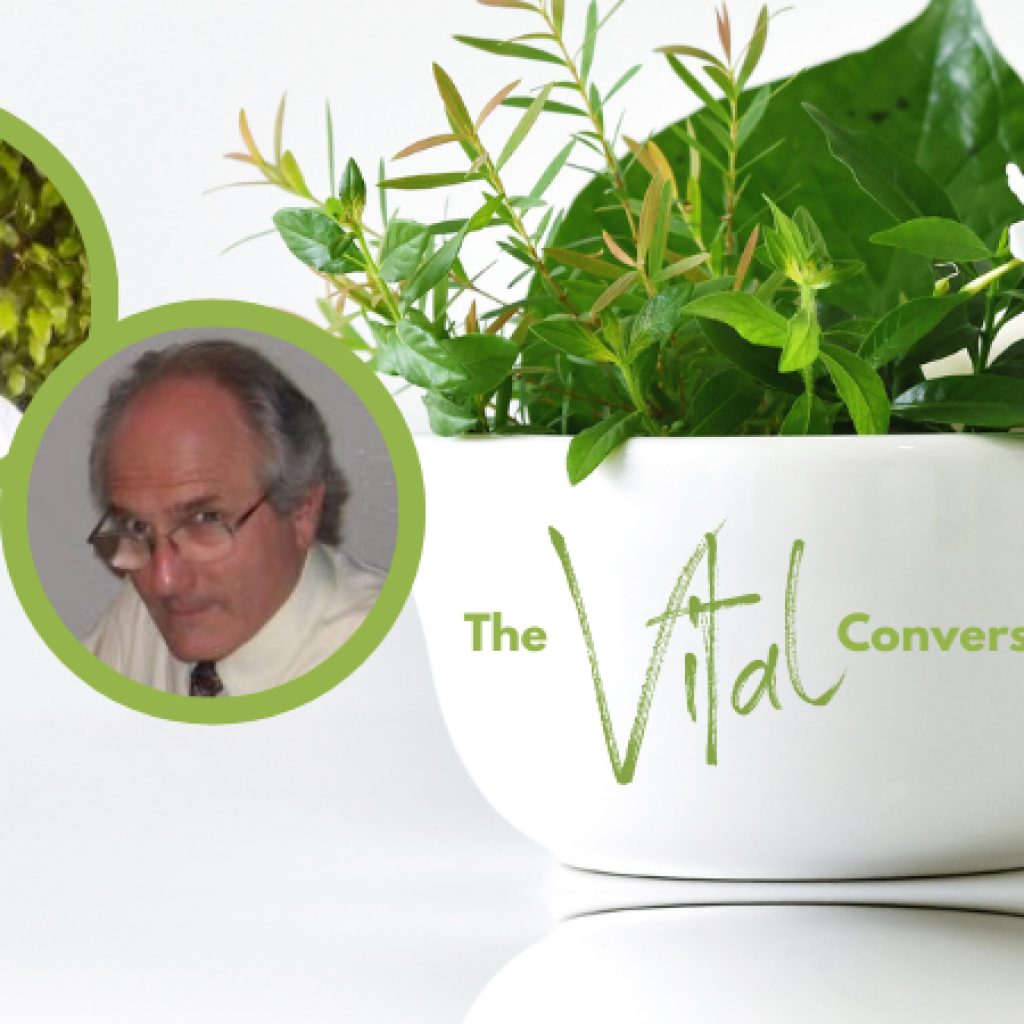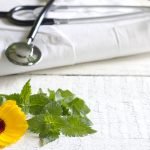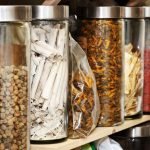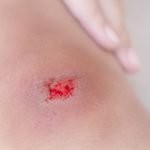JAMES SENSENIG, ND
JARED ZEFF, ND, VNMI, LAC
This column is transcribed from a weekly live conversation produced by the Naturopathic Medical Institute (NMI). The goal of NMI is to preserve and promote the principles of naturopathic philosophy through clinical application, in your offices and in your communities, every day. This lightly edited transcript (by Judith Boice, ND, LAc, FABNO) is the second part of a 3-part conversation hosted by James Sensenig, ND, featuring Jared Zeff, ND, VNMI, LAc. It took place on October 18, 2017.
Dr Carroll’s Botanical Formulations
Dr Zeff: I studied with Dr Letitia Dick-Kronenberg’s father (Dr Harold Dick), and I got these formulas from him. These formulas were developed by Dr O.G. Carroll. I’ve used them ever since I studied with Dr Dick. I rely on them. They work very well.
This is how O.G. Carroll named his formulas – actually, his wife named them. The C Capsule is for constipation. The 50 Capsule is 50 percent Gentiana and 50 percent skullcap. The 42 Capsule is 4 parts wormwood and 2 parts aloe. WW is wormwood. Special G is Gentiana lutea.
I’ll typically start a patient with 1 capsule per day. I’m not trying to cure constipation; I’m trying to normalize the digestive function so there is no constipation. But in the meantime, the patient is having 1 bowel movement a week while we’re trying to fix their digestion. We’ve got to get that toxicity moving. This capsule is one way to do that.
I’ll start with 1 per day; if that’s not enough, I’ll go to 1 per meal; if that’s not enough, then I’ll start adding things like electrotherapy or something else to get the gut moving – maybe even needling.
This is my basic stomach tonic: Gentiana/Scutellaria. It was developed by Otis G. Carroll. Wise Woman [Herbals] makes these; I don’t think any other company makes these, but I have them made for me by one of our doctors who owns a dry herb company in Washington [Dr Rhonda Summerfield, Western Herbal and Nutrition, in Index, Washington].
Special G is just pure gentian. It’s kind of a gut tonic. It’s not only stomach, but also the gut tract, including the intestines.
For a nervine, he used skullcap/valerian. I rarely use this capsule because I don’t like using valerian much. Obviously, it’s a good friend, it’s an effective medicine, but it’s a bit druggy.
I don’t like using Ephedra. Ephedra is hard to get now, because somebody figured out how to turn it into methamphetamine, so the FDA doesn’t like it. But you can get it – especially if you walk out into the desert a little north of here. I don’t like Ephedra because it’s a harsh, “speedy” medicine. But sometimes it’s very useful.
Similarly with valerian, it’s a little too druggy. I don’t like it that much, but it has its place. Some people use a lot of it, but I hardly use any of it. For me, for a nervine, I would use pure skullcap…or depending upon the need, possibly skullcap, Melissa, and Avena. That would be a nice formula.
As for WW (wormwood), Dr Dick told me WW liquefies the mucus, so he used it in asthma. Depending on the size of the child or adult, 1 or 2 capsules per day. You can also use that when there is hard, dry mucus in the lungs, a harsh cough, hard to expel. Wormwood tends to liquefy the mucus and make it easier to expel.
The famous 42 Capsule – I hate those! Some people actually like them. The powerful way to use them is called a 42 Cocktail. This is when Dr Dick would use a 42 Cocktail: if someone was having an MI [myocardial infarction], he’d give them a 42 Cocktail and do a variation of the hydrotherapy treatment, which he mentioned on the movie. He said the 42 Cocktail will empty the stomach.
Let me address that a bit. I had some dental surgery a while ago. They took a tooth out. It was a big deal, and I needed no pain relief after the tooth extraction, because I fasted. Nothing but water. On the third day, I started to eat, and then I had pain. The point of that is, if you’re having pain, and you empty the stomach, typically the pain goes down. So, Dr Dick would use a 42 Cocktail to treat a migraine. You take 2 of these capsules, empty them in a 1-ounce glass, like you’d put a shot of whiskey in, put some warm water and mix it up. Drink it down. It’s the most foul-tasting stuff there is. I hate it, but it’s very effective. It hits the stomach, and it empties the stomach.
You have to be careful with this formula because it will often cause an urgent, crampy diarrhea the next day. Because I knew I was going to be standing up here today, I would not take this yesterday if I needed it, because then I might have to run out of here really quick! Not everyone has that effect from it, but I do, so I’m very careful with it. I would not take this and fly on an airplane. I only take this if I know I’m going to have an easy time getting to a bathroom the next day.
It’s primarily for pain, to empty out the stomach. He would use it when someone was getting acutely ill. He would give them a 42 Cocktail and a hydrotherapy treatment. For an acute flu, an acute influenza, an acute abdominal pain, he would give them that. Of course, if he thought the person was having appendicitis, he wouldn’t do this. But for a lot of things, he would – including an MI. He treated a number of MIs that way. I haven’t had that experience, so I can’t report on it.
These are the primary botanical formulas that Dr Carroll made that I know of that were passed on to me. Dr Dick-Kronenberg uses them; she makes them. I use them as well.
Someone from the audience: The 42 Cocktail is also really good for dealing with acute cholecystitis. For gallbladder pain, it can bring relief in 15 minutes.
Dr Zeff: With that, I’m going to invite Dr Sensenig up to finish this section off, and anything he wants to add. Then we’re going to have questions and discussions.
Phytolacca, Chemotherapy & the Eclectics
Dr Sensenig: I’m not sure what I can add to that, but just a couple of thoughts. When you were talking about Phytolacca [see the July 2022 issue of NDNR], I want to point out that if people don’t know, it’s also an excellent antineoplastic. Some of you may be familiar with the various herbal formulas used for cancer, one of them being the old Hoxsey formula. It’s also known as the Trifolium compound, or the red clover-Stillingia compound. This was a combination of 8 different extracts, one of which is Phytolacca. It was originally part of the United States Pharmacopoeia (USP) as a treatment for folks with cancer, but after the “invention” of chemotherapy, it was removed from the USP.
I agree with Dr Zeff in this thing: we think about if these things that we’re told…that these things are toxic herbs? They’re not toxic, because toxicity is a matter of dose. Anything can be toxic – including water – at a high enough dose.
As an aside: Talking about conventional medicine…there’s this assumption on the part of the public that much of what comes into clinical practice is somehow related to strenuous laboratory research and clinical trials. Chemotherapy was borne of an excess stockpile of nerve gas after WWI. We had all this nerve gas in the United States with nothing to do for it. Somebody decided we can use it for medicine. That’s the beginning of the chemotherapy approach to cancer.
The other thing I want to point out is that Dr Zeff was talking about relatively small doses, often just a few drops, or a few ounces, or a few drams. It dawns on me that many of you may not know what he’s talking about.
When we were in school a long time ago, our predecessors taught us botanical medicine based on the Eclectic approach to medicine – not the pharmacological herbal tradition, but rather the Eclectic tradition, much of which has derived into his lecture today. This is where these botanical extracts are used, not because of their constituents, but because of the whole plant and its energy.
Deborah Frances is a naturopathic doctor in Oregon. She would say, “If you want to know what Crataegus is used for, go sit under a hawthorn tree and talk to the tree. See how your body is affected by the presence of that tree, or how your presence affects you. You do that, you’ll know what Crataegus is good for.”
The Eclectics used botanical medicines in a way that started to move toward the potentization that was being done by the homeopaths, but the Eclectics couldn’t quite get there. They were a little skeptical about the succussion and the high dilutions (1 in 10), etc. Nonetheless, they used all their remedies in relatively small amounts compared to the physiological doses that some of our schools are teaching now.
The indications for those botanicals, therefore, are the materia medicas of the Eclectics. They’re all on our NMI website. We talked about it in the Vital Conversation. We’re talking about famous materia medicas, such as Ellingwood, Felter, Lloyd, Cook, Culbreth – these are the classic Eclectic materia medicas. You will find that the indications for every botanical extract in those materia medicas includes the indications for physical symptoms, including a broader picture. There’s a picture for the herb. There’s not just the pharmacological understanding of these various physical constituents of the plant.
Plants are living beings. They are our friends. They can talk. They can feel. They know what’s going on. If we understand them more as individuals on a mission than as just something that’s made out of stuff, and how that stuff affects us…that’s what a vitalist doctor is all about.
Apothecary Measurements & Dosage
The Eclectics grew up in a time when the measurement system in medicine was the apothecary system. It had little to do with milliliters and ounces as things are being done today. I have several pocket guides from various hospitals at the turn of the century from London and the United States. This is the book that the doctor carried in their pocket for quick reference for something. Every one of these has a botanical formula spelled out for whatever the condition is in apothecary measure. If you don’t understand those measures, 1 ounce = 8 drams. So, when we’re talking about drams, there are 8 drams in a fluid ounce. Many of these formulas use a few drams or a few drops.
The dilution is obviously caused by using a small amount of something in a larger amount of a fluid. Some of these things can be used in doses of ½ drop, or even 1/50 of a drop, etc. How do you do that?
You put 1 drop in 50 drops of water, and then 1 drop of that mixture is 1/50. I remember having somebody ask me, “How do you administer a ½ drop? How can you count out a ½ drop?” You put 1 drop in 2 drops of something else, then you give them 1 drop. How do you administer 1/10 drop? You put 1 drop in 10 drops of something else, and give them 1 drop, etc.
I’ll give you an example of one of my favorite Eclectic formulas from Dr Turska. It was his “go-to” liver formula, and it was used almost for everything. The indications were what he called “when somebody had bilateral crud.” Fatty liver, torpid liver – bilateral crud. “When in doubt, clean ‘em out.”
His formula was Chelidonium, 4 drams; Chionanthus, 4 drams; Podophyllum, 10 drops, all in 4 oz of water.
That’s a typical formula. There are books that survived in regard to using these formulas: Useful Prescriptions by Cloyce Wilson. He goes through prescriptions for many different medical conditions, but they’re all written in the apothecary style.
You start with: Rx = “take thou” (Latin); Chelidonium = drams 4; Chionanthus = drams 4; Podophyllum = drops 10. Then you QSAD 4 fluid ounces.
Then there’s a part to the prescription called the signature, which is the way in which you use it.
The way you put together the formula is important. You read the whole formula. If you’re going to make a tincture, we have Chelidonium, 4 drams; Chionanthus, 4 drams; Podophyllum, 10 drops; QSAD 4 oz. You know you’re going to end up with 4 oz because the QSAD is Latin for “at a quantity sufficient” – of aqua distillata (distilled water) in this case.
Whenever you QS something, it means “at a quantity sufficient to reach a certain point.” In many of these old formulas, you will see QS with something. It’s not always aqua distillata. In fact, in one of the materia medicas that I referred to, they have probably 50 to 60 different kinds of water listed. You have aqua distillata, rainwater, lake water, river water, seawater, water from New York.
If you’re going to make a formula like the one I mentioned, you’re going to end up with 4 ounces. Knowing that you’re going to add 4 drams of Chelidonium, and 4 drams of Chionanthus, and 10 drops of Podophyllum, you know from the get-go that you’re going to put about an ounce of tincture in a 4-ounce bottle. That means that ¾ of that 4-ounce bottle is going to be water.
So, you fill the bottle first about halfway. Then you add your first botanical, mix well by shaking it up; then you add the next botanical, and mix well; then you add the drops of Podophyllum; then you top it off with more water to 4 ounces.
I have not seen this taught this way anywhere else. I remember the first time I had somebody in my office from one of the schools who took an herbal tincture and put it in a 1-ounce bottle, maybe half an ounce of something, and then they added another half an ounce. I almost fainted!
Like, “What are you doing?!”
“Well, I’m mixing these herbs together.”
“With no diluent? Are you kidding me? What are you being taught?”
What the Eclectics taught us is that whenever you put tinctures together, you are likely to have a precipitate. You know the old saying, “If you’re not part of the solution, you’re part of the precipitate”? When you mix those formulas together, what is precipitating? What is that stuff? What value does it have in the formula? You always dilute, and then add another and another and another to the diluent, and then top it off.
Most of the Eclectic formulas are based on 4 ounces. The reason they’re based on 4 ounces is because the regular prescription is usually a teaspoon: TID = a teaspoon every 8 hours, or QID = a teaspoon every 4 hours, etc.
A 4-ounce bottle has 120 ml; a teaspoon is roughly 5 ml, so you have 24 doses in a 4-ounce bottle. But actually, you have 21 doses, because you account for some spillage, believe it or not. So, a 4-ounce bottle lasts 1 week at TID.
That’s the way we learned to think about this. It’s in contrast somewhat to what has been said, but you at least have to be aware of this information if you’re going to go back to the Eclectic materia medicas, and the Eclectic formulae and understand why they were written that way, even if you don’t agree with me on the problem with the precipitate.
To this day, when I see somebody mix two botanicals together, chills go up my spine!
This column, based on the Vital Conversations of the Naturopathic Medicine Institute, will continue in next month’s NDNR.

James Sensenig, ND, was a 1978 graduate of NCNM in Portland, OR. For over 40 years he maintained an eclectic practice in Hamden, CT. Over the years, Dr Sensenig held prominent positions in the various naturopathic colleges and the AANP. A champion of classical naturopathic medicine, Dr Sensenig received an Honorary Doctor of Naturopathic Philosophy degree from CCNM, and received numerous awards for his dedication to teaching the principles of naturopathic medicine. We invite you to participate in the Naturopathic Medical Institute (NMI) Vital Conversations, our annual Vital Gathering conferences, and many other resources found at our website: www.naturopathicmedicineinstitute.org.

Jared L. Zeff, ND, VNMI, LAc, is a licensed doctor of naturopathic medicine and a licensed acupuncturist. In addition to functioning as Medical Director at the Salmon Creek Naturopathic Clinic in Vancouver, WA, Dr Zeff teaches on the faculty at National University of Natural Medicine in Portland, OR, where he was also Dean from 1988 to 1993, and holds a professorship in Naturopathic Medicine. Dr Zeff is a graduate of the University of California, NCNM, and the Emperor’s College of Traditional Oriental Medicine. He, along with Pamela Snider, is the author of the AANP’s Definition of Naturopathic Medicine, and the Therapeutic Order concept.





